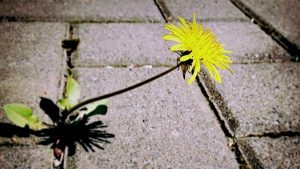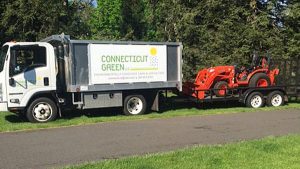Growing a healthy lawn may seem like a lot of work, but at the end of the day, is there anything like a yard full of beautiful green grass? While you may not enjoy the chores surrounding lawn care in Connecticut, it’s worth the effort – and of course, we’re here to help! Despite recent trends promoting rock gardens and even AstroTurf, we’re firm believers in a traditional front yard featuring a carpet of green.
Below, we offer our basic guide to keeping your lawn healthy:
- Aeration is key. It may not seem like an important step, but aeration is one of the most important parts of lawn care. By using an aerator to punch small holes in your lawn, you create channels that allow air, water, and nutrients to circulate around the soil and freely access the roots of your grass. Aerating also reduces soil compaction and combats thatch, and it allows fertilizers and other nutrients to reach roots more easily. Your aerated lawn creates the perfect environment to nurture and grow new seed.
- Top dress with compost. We know that top dressing improves the quality of the soil over time – especially if it’s added right after aeration. Adding top dressing with compost, like (and along with) aeration, helps reduce compaction, and promotes healthy root growth. A good organic top dressing can protect lawn from disease and even reduce the need for fertilizers later on by adding biostimulants and nutrients to the soil.
- Overseeding for a lusher lawn. Overseeding makes your lawn thicker and lusher, while preventing weeds and disease – and protecting it from drought. Older lawns don’t grow as readily over the years, and overseeding will help restore your lawn’s beauty and health. At Connnecticut Green, we typically overseed in September, after your lawn has taken its summer beating, but before the ground freezes.
- Just like people, plants need a healthy diet. Slow-release fertilizers in spring and fall do a world of good for grass. The best fertilizers have a healthy mix of macro nutrients – nitrogen, phosphorus and potassium (symbolized fertilizer bags or boxes as N-P-K) – and micronutrients. While many lawns in our area are made up of common grasses and grow in similar soil, occasionally a soil test is required to determine the optimal nutrient mix.
- Mow, but don’t overdo it! You may be tempted to scalp your lawn so you can mow less frequently – but resist. Leaving grass longer actually inhibits crabgrass growth – and keeps it greener, too. When you cut the grass too short, it you reduce its ability to grow strong roots and you leave it more vulnerable. Leaving it longer it is better able to produce energy for growth, making it more vigorous and stress-tolerant.
- Water longer, but less frequently. We recommend watering every other day. From our previous post:As for how much you should water, according to the smart folks at Bayer Advanced, “a very general rule of thumb is to provide lawns with 1 to 1.5 inches of water per week, from irrigation or rainfall. A good way to check moisture penetration is to probe the soil with a screwdriver or similar object.” Also, refrain from watering between noon and 2:00pm, when the summer sun is at its peak. The water will evaporate before it can really penetrate the soil.
They may be a lot of work, but there’s nothing like a beautiful lawn. A lush lawn adds value and aesthetic appeal to any home. At Connecticut Green, we’re committed to helping you cultivate the healthiest, most verdant lawn possible. Contact us today to learn more about our lawn care services!





